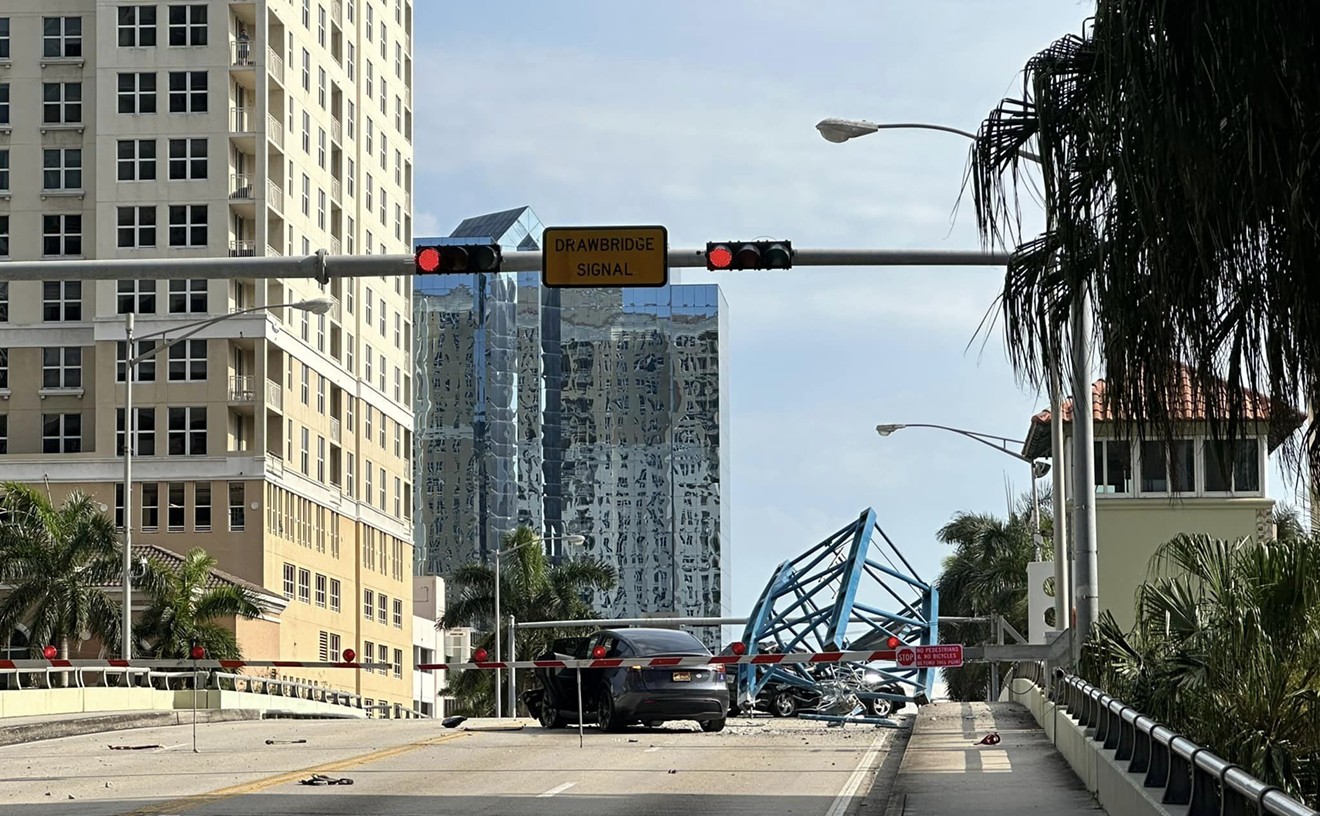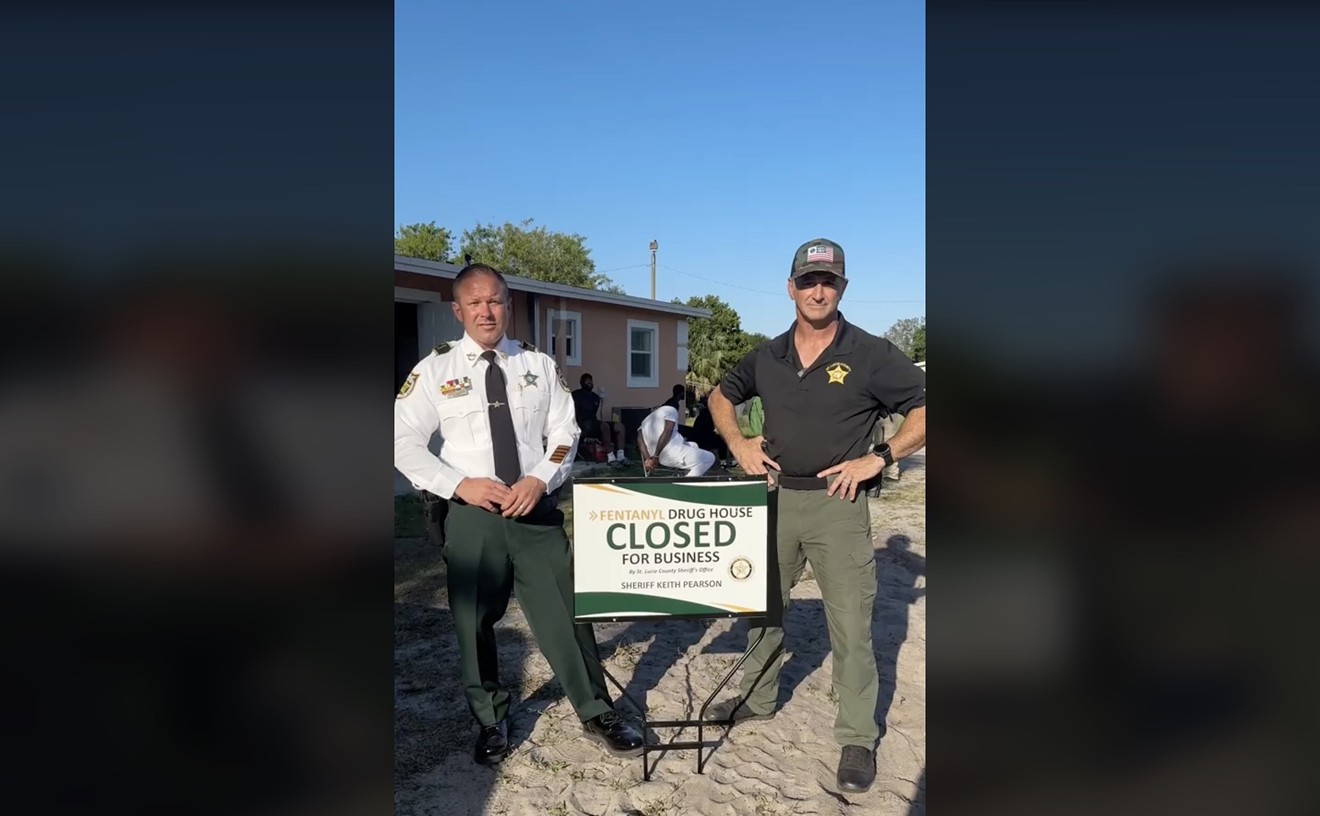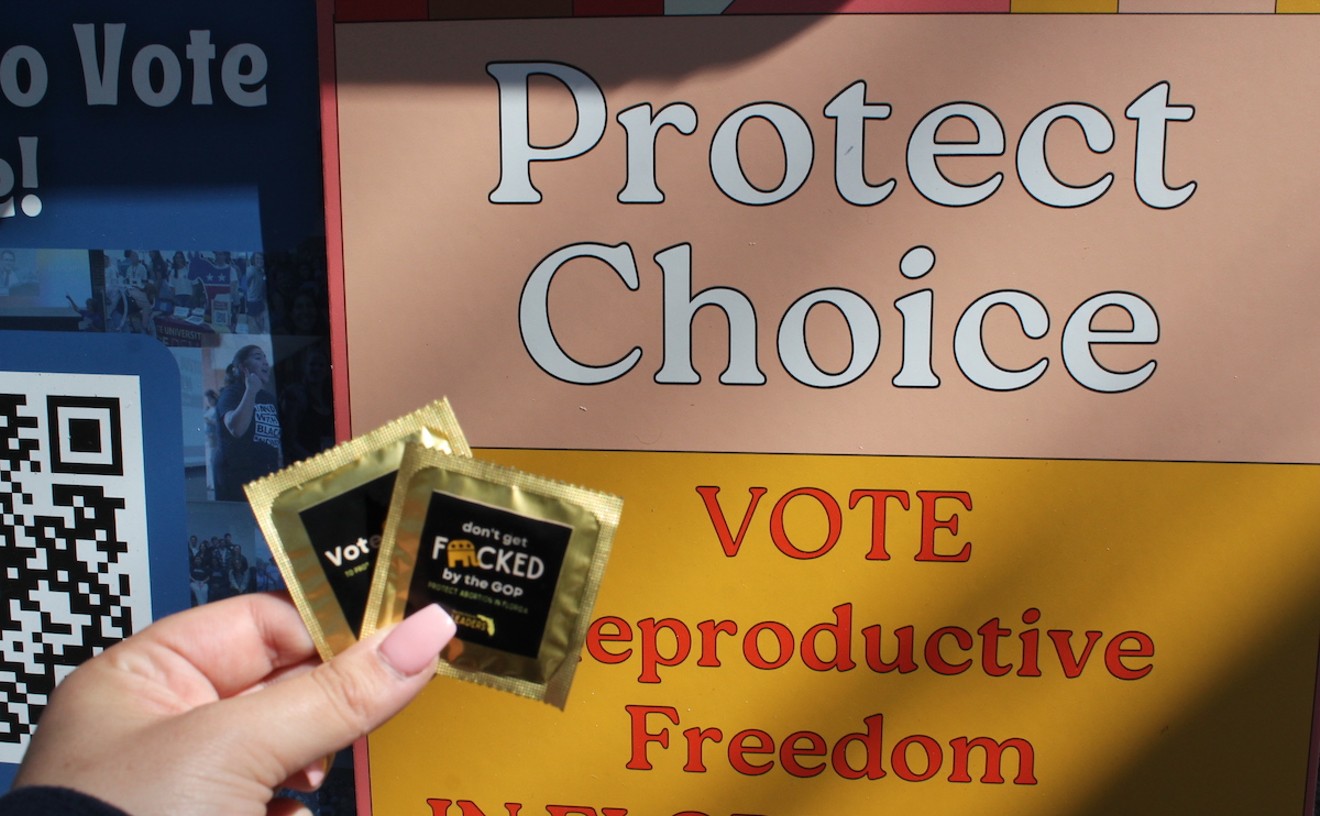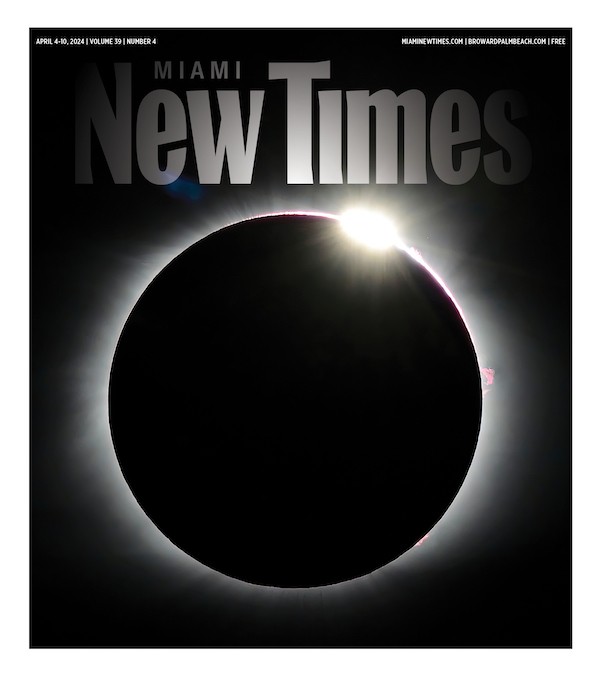Critics argue that as bad as the Castros are, the federal government's ongoing, near-slapstick attempts to sabotage the administration have done little but ratchet up the tension between the two nations for no real reasons other than spite and force of habit.
So after New Times this week revealed that the OCB had for the last two years pitched plans to create "non-branded" and "native" Facebook accounts to spread pro-American propaganda on the island, it's worth revisiting the long, storied, and often unbelievable history of anti-Cuban government propaganda efforts in Miami. This is by no means an exhaustive list, but here's a primer:
1. The CIA's largest outpost in the 1960s and 1970s was the infamous "JM/WAVE" station on the University of Miami campus.
To get to the building the CIA used as the nerve center of its secret war against Fidel Castro, you head south on the Florida Turnpike to the Coral Reef Drive exit, just as if you were taking the kids to Metrozoo. Then you go west on Coral Reef about a mile, past the antenna fields of a Coast Guard communications station and the cookie-cutter townhouses of a development called Deerwood before you come to the zoo's main entrance.
Look carefully for the very next opportunity to turn left, onto a nameless road reached through an open gate marked with the unexplained acronym: RTAO-USAF. Ignoring the small, anonymous office buildings that appear from nowhere on your right, you follow the battered pavement south, toward a far more imposing landmark — a bizarre, 200-foot-tall concrete monolith that looms above the hurricane-smashed pineland like a giant broken tooth, crowned with mysterious antennae. Your destination stands a few hundred yards from the base of this blimp-hangar remnant: a rambling, two-story wood-frame structure, obviously long abandoned, plastered with government-issue No Trespassing signs.
Fronted by tall white columns and topped with a gabled roof, plywood covering its windows and paint peeling from its clapboard exterior, it looks like nothing so much as the Fraternity House of Usher. More than twenty years after the last of the Agency's spooks cleared out, their old headquarters remains profoundly spooky, the passage of time having done little to dissipate the air of skullduggery that hangs over the place, hinting at ominous secrets buried just below its rotting floorboards.
Make no mistake about it — such secrets are there in spirit if not in material fact. After all, this was the spy base the Company code-named JM/WAVE, the largest CIA field station in the world at the height of the Cold War and the dark heart of a thousand cloak-and-dagger conspiracies aimed at the communist menace to the south. This was the home office for Operation Mongoose, the global campaign of espionage, sabotage, propaganda, and assassination that the Kennedy administration launched in the wake of the Agency disaster at the Bay of Pigs, which marks its 36th anniversary today, Thursday, April 17.
2. CIA agents once contemplated staging a false-flag bombing in Miami and blaming the deaths on Fidel Castro.
Donald Trump's bold promises earlier this week to finally blow the lid off the JFK assassination mystery by declassifying reams of secret documents turned out to be a gigantic tease. The National Archives ended up making public only a fraction of the JFK documents last night.
Still, the 2,800 papers included in the new document dump confirm some salacious details of America's decades-long quest to kill or depose Fidel Castro — including a fairly shocking plan by the CIA to sow terror in Miami.
After Castro's revolution succeeded and thousands of Cubans fled to South Florida, the agency actually considered murdering a boatload of refugees, assassinating exile leaders, and planting bombs in Miami — all so Castro could be blamed for the chaos.
The basic idea was to turn world opinion against Castro and possibly justify a U.S. military invasion by pinning the atrocities on him. The details of the sinister plot are included in a summary about Operation Mongoose, a 1960 covert op hatched by the CIA under President Dwight Eisenhower with the aim of toppling Communist Cuba.
The campaign was included in a report on "pretexts" the U.S. could conjure up to justify a military intervention in Cuba. The paper was sent by Gen. Edward Landsdale, a top Cold War officer who worked with the CIA to plot out Operation Mongoose; he sent the report, which included nine other "pretexts," on April 12, 1962, to Gen. Maxwell Taylor, who would soon become chairman of the Joint Chiefs of Staff.
Just to reiterate how crazy this idea is: The CIA thought about blowing stuff up in Florida and murdering innocent refugees simply to make Castro look bad.
3. JM/WAVE agents also openly wrote about using Miami Herald reporters to place "propaganda" in the newspaper.
Thanks to the cache of John F. Kennedy-related files the government recently released, Miamians now know about the utterly bonkers plot the feds cooked up to stage a false-flag bombing on its own populace in Miami and then blame the deaths and chaos on Fidel Castro.
But according to CIA documents the Miami Herald dug up yesterday (and a few that New Times subsequently found), the JFK archive is full of all kinds of other insane tidbits about life in the CIA-informant-filled Magic City during the Cold War era. Namely, two Herald journalists — reporter Alvin Burt and Latin America editor Don Bohning — were working as covert CIA informants while also writing and editing for the newspaper in the late '60s.
According to declassified CIA documents, Burt was given the codename "AMCARBON-1," while Bohning was called "AMCARBON-3." Records show the CIA believed both men could have had access to useful information about the Cuban exile community in Miami. Documents show both men gave information to the CIA: Burt reported on Cuban anti-Castro revolutionaries, while Bohning passed along at least one tidbit about then-Louisiana prosecutor Jim Garrison's investigation into the Kennedy assassination. Another CIA report shows the agency hoped to use its South Florida news-media connections for "surfacing propaganda items."
The existence of the AMCARBON informants in the Herald newsroom has been discussed since at least 2005, when writer Joan Mellen referenced Burt and Bohning in her controversial book about the Garrison investigation, A Farewell to Justice. But the newly released archive paints a picture of the work the two journalists did for the intelligence agency. The "AMCARBON-1" nickname also turns up in JFK documents published by the Mary Ferrell Foundation: The foundation's CIA codename database also notes that another possible informant, AMCARBON-2, might have existed in the Herald newsroom as well.
First, on March 19, 1964, records from the Mary Ferrell Foundation show the agency wrote a full report about Burt's relationship with the unnamed "AMCARBON-2" journalist, the CIA's "KUBARK" interrogation and torture program, and the infamous "JM/WAVE" CIA outpost on the University of Miami campus. The report says CIA higherups gave JM/WAVE operatives permission to "contact the major South Florida news media in an attempt to work out a relationship with these news media which would ensure that they would not turn the publicity spotlight on those KUBARK activities in South Florida which might come to their attention."
Later in the report, the CIA says it "successfully" used Burt as a "propaganda outlet through which items of interest to KUBARK could be surfaced in the free world press." The CIA then listed three instances in which it fed stories to Burt.
4. Radio and TV Martí once flew a propaganda broadcasting blimp over the Florida Keys before it broke loose in 1991.
That a liberal bastion like the New York Times would command Congress to turn off TV Marti came as a surprise to no one. In an editorial published October 1, the Times referred to the controversial television project as "the limp blimp," and noted that it had consumed $67 million since 1990, when it began broadcasting an assortment of Popeye cartoons and news programs toward Cuba. The word toward Cuba being significant, since rarely does the signal get through to the people it is intended to entertain and inform.5. TV Martí then transitioned to using a private airplane until 2015. Via the Washington Post:
The unmanned "blimp," tethered to Cudjoe Key a few miles north of Key West, relays Marti's signal from 3:30 and 6:00 a.m. to avoid violating international broadcasting treaties. Not exactly prime-time hours. Worse, the floating transmitter can only operate during good weather. Worse still, the pictures are almost always jammed by Fidel Castro's government. "Given the sacrifices asked of all federal agencies," implored the Times, "it is indecent to squander millions on TV programs that scarcely anybody ever watches."
At an airfield in rural Georgia, the U.S. government pays a contractor $6,600 a month for a plane that doesn’t fly.
The plane is a 1960s turboprop with an odd array of antennas on its back end and the name of a Cuban national hero painted on its tail. It can fly, but it doesn’t. Government orders.
“The contract now is a ‘non-fly’?” contract, said Steve Christopher of Phoenix Air Group, standing next to the plane. “That’s what the customer wants.”
The airplane is called “Aero Martí,” and it is stuck in a kind of federal limbo. After two years of haphazard spending cuts in Washington, it has too little funding to function but too much to die.
The plane was outfitted to fly over the ocean and broadcast an American-run TV station into Cuba. The effort was part of the long-running U.S. campaign to combat communism in Cuba by providing information to the Cuban people uncensored by their government.
But Cuban officials jammed the signal almost immediately, and surveys showed that less than 1?percent of Cubans watched. Still, when Congress started making budget cuts, lawmakers refused to kill the plane.
6. The Office of Cuba Broadcasting tried to smuggle satellite receivers into Cuba before realizing Cubans were using them to watch porn. Via the Miami Herald:
With the Cuban government’s persistent jamming of their broadcasts, Radio and TV Martí have used alternative means to deliver content to the island —– including sneaking in the same technology that put Alan Gross in prison.
Gross, a subcontractor with the U.S. Agency for International Development, spent five years jailed in Havana for giving Cubans forbidden technology for accessing the internet. It's now clear that the U.S. government's Office of Cuba Broadcasting (OCB), which runs the Martí operations, did the same for years.
The OCB slipped into the island small satellite sets known as BGAN — Broadband Global Area Network — as part of its effort to provide Cubans with access to the internet that was not monitored by the Cuban government, and to deliver Martí programs to the island.
The BGAN program began during Fiscal Year 2013, which started Oct. 1, 2012, and ended in FY2015, according to Nasserie Carew, a spokesman for the Broadcasting Board of Governors (BBG), the federal agency that runs OCB.
Gross was arrested in Havana in 2009 after delivering BGAN transmitters to the island's Jewish community. He was convicted of “acts against the independence or territorial integrity” of Cuba and was freed in December 2014 as part of a prisoner exchange with the Obama administration.
The BGAN program “consisted of small two-way satellite devices that were distributed within Cuba by OCB,” Carew wrote in an email to el Nuevo Herald.
“Users of these devices could access the Internet via commercial satellites, which allowed circumvention of censorship of the internet by the Cuban government. Users could also share this access with other nearby people over WiFi,” he added.
“Access speeds were faster than dial-up speeds commonly available in Cuba, but at approximately 400 kilobits/second, significantly slower than modern broadband access available in most of the rest of the world,” he said.
“The program was discontinued due to the high costs of the program,” he wrote. “The cost per user was high due to both the BGAN hardware costs and the bandwidth costs of the satellite Internet access,” the spokesman wrote.
“We used to do it. We no longer do it because it was not cost effective,” said André Mendes, who was interim OCB director until his resignation Wednesday. He said that the BGANs had been used by some to access pornography, which is illegal in Cuba. “We are not in the business to give access to porn.”
7. The federal government tried to create two social media text-message apps designed to foment revolution in Cuba. Via GlobalPost:
The US government is using a sophisticated cell phone program in a failed effort to spark anti-Castro demonstrations on the island, according to Cuban officials and a US expert.
The US Office of Cuba Broadcasting (OCB) sponsors a cell phone service called "Piramideo" (roughly translated as Pyramid), which spreads propaganda through text messages, according to Nestor Garcia, a former Cuban diplomat who now teaches at the Institute for International Relations in Havana.
"My students started getting text messages on their cell phones with news reports about demonstrations that never happened," Garcia said. "The US is trying to create a climate to protest against the Cuban government."
Piramideo, which has received little media coverage, is just one skirmish in an internet war between the American and Cuban governments, included ZunZuneo, a Twitter-like program secretly backed by USAID from 2010-12. USAID contractors developing ZunZuneo discussed plans to spark anti-government demonstrations.
In 2009 the Cuban government arrested Alan Gross, a USAID contractor, for distributing satellite phones aimed at establishing WiFi hotspots to be used by Cuba's small Jewish community. He was convicted of spying, sentenced to 15 years, and remains jailed in Havana.
The OCB publicly announced the existence of Piramideo in June 2013, and it continues to operate today.
8. Now the OCB has apparently been planning to use "non-branded" Facebook accounts to sow dissent on the island.
Whether or not Donald Trump colluded with Russian agents, there's no doubt Moscow is running a sophisticated online campaign to sow dissent in America. Robert Mueller has already indicted numerous Russian agents for using Facebook to meddle in the 2016 election, and journalists have clearly spelled out how Vladimir Putin's Internet Research Agency manipulates the web.
The United States has even condemned the Russian government and sanctioned its leaders. But at the same time, the U.S. has put together its own plans to use Facebook to foment dissent clandestinely in Cuba.
At the center of those plans is the U.S. Office of Cuba Broadcasting, which runs the Miami-based Radio Martí, TV Martí, and Martí Noticias. OCB is led by former Miami Mayor Tomás Regalado.
The plans are spelled out in budget documents for the 2018 and 2019 fiscal years from the U.S. Broadcasting Board of Governors, which runs pro-U.S. networks such as the Voice of America and Radio Free Europe. The agency says the government has plans to use "native" and "non-branded" Cuban Facebook accounts to spread government-created content without informing Cuban Facebook users:
Due to Marti’s web blockage on the island, OCB’s digital strategy has shifted into a social media consistent with the metrics that place YouTube, Google, and Facebook among the most visited sites in Cuba. With the use of AVRA technology, Radio Marti programs evolved into visual radio and streamed via Facebook Live along with the TV Marti programming. This provides OCB with an additional efficient and cost effective distribution outlet both for its radio (visual radio) and TV content.
In FY 2018, OCB is establishing on island digital teams to create non-branded local Facebook accounts to disseminate information. Native pages increase the chances of appearing on Cuban Facebook users' newsfeeds. The same strategy will be replicated on other preferred social media networks [emphasis by New Times].











